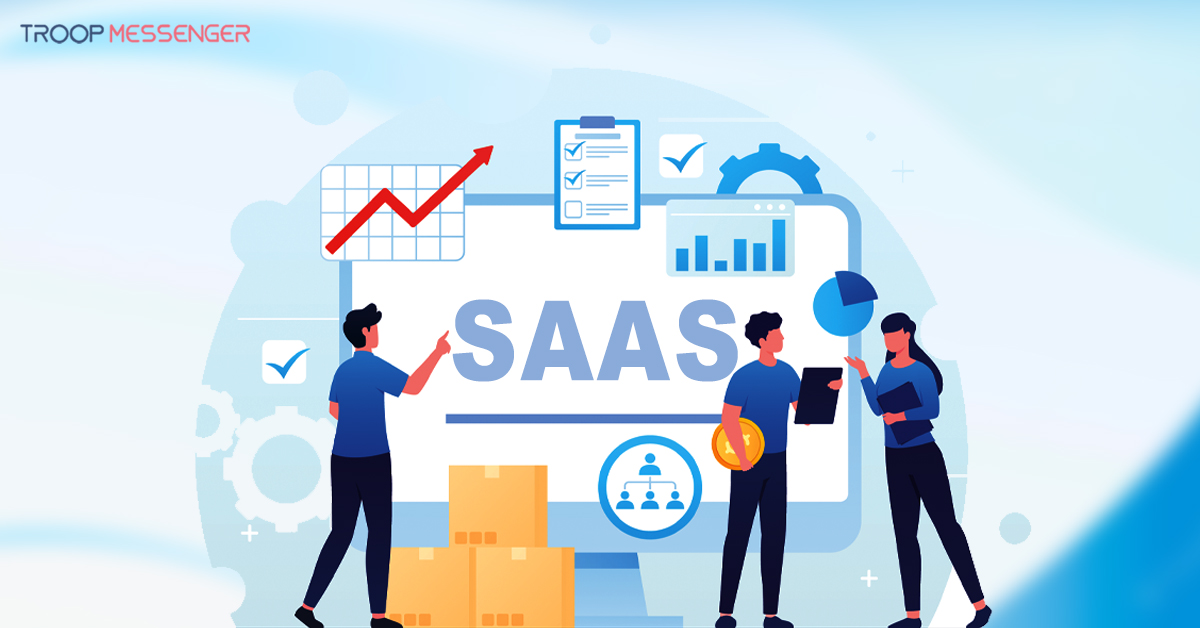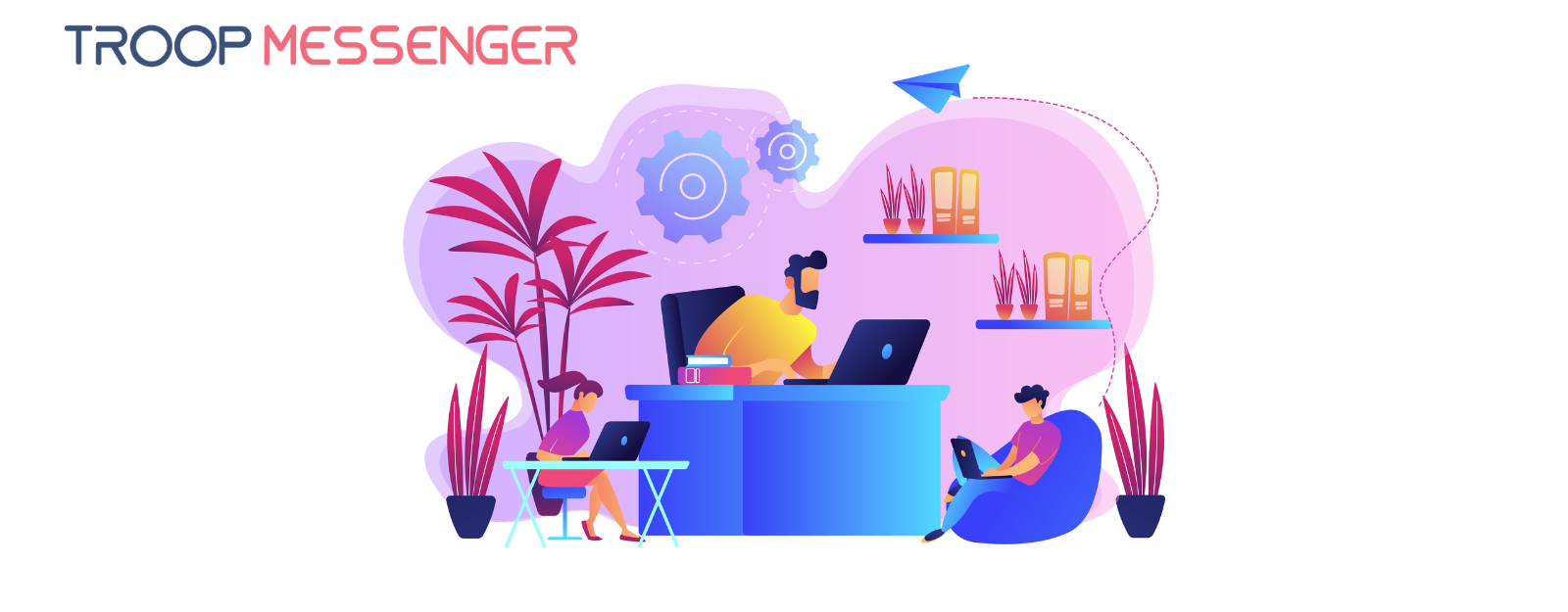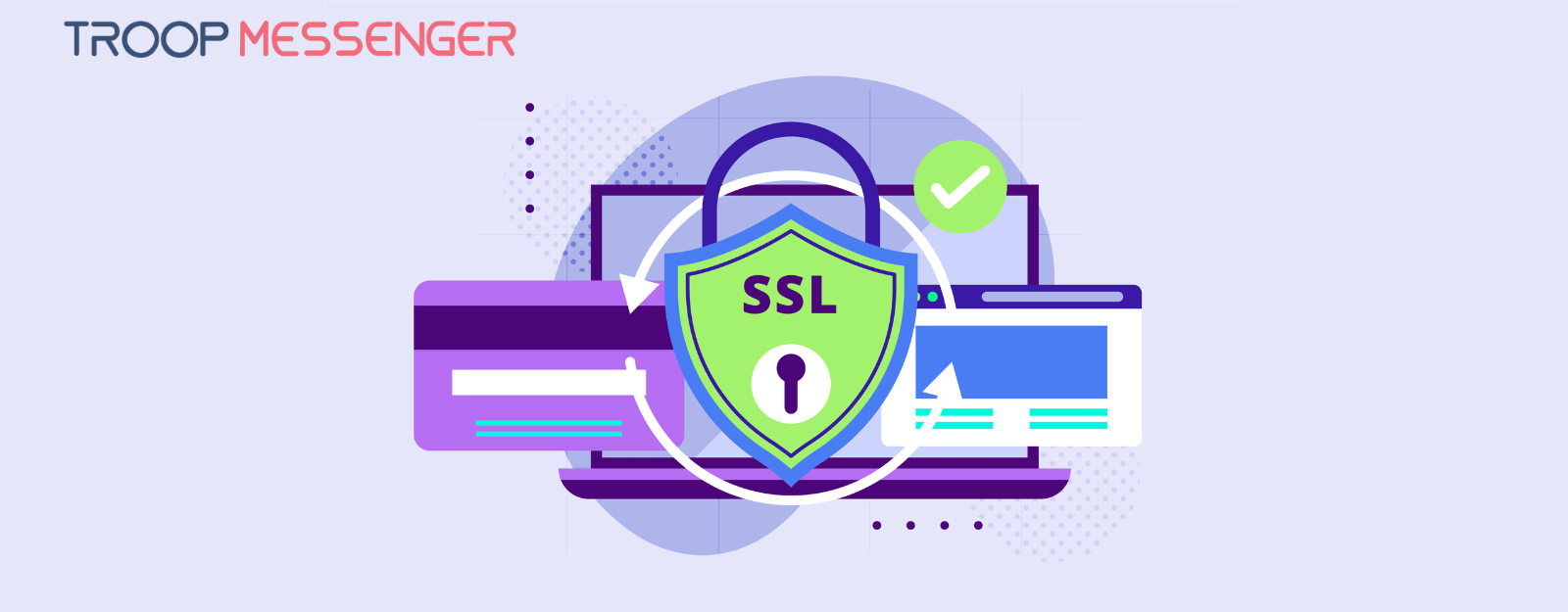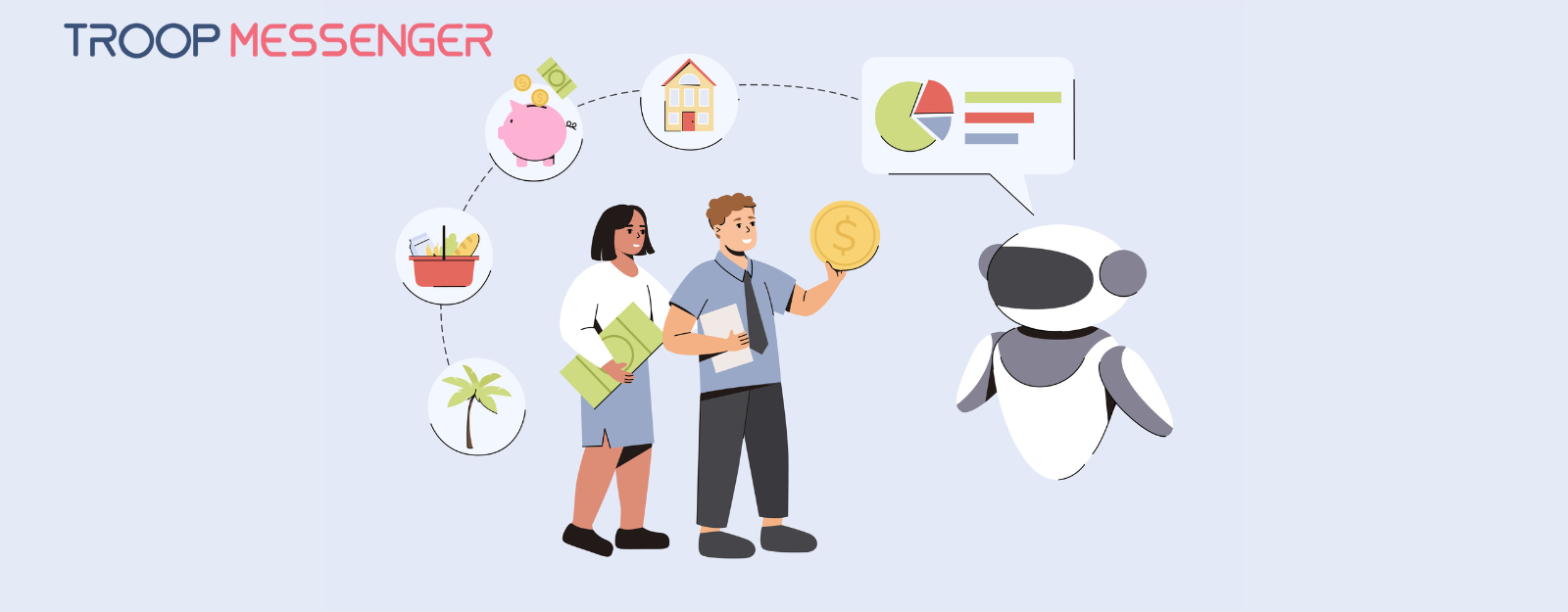Connect with us

Strategies and Trends in SaaS That will Influence the Industry [2023]
Even though Software-as-a-Service (SaaS) has existed since the 1990s, the pandemic’s early stages coincided with its peak. Following the initial lockdowns of 2020, telecommuting and hybrid workplaces are becoming increasingly popular, and more businesses are putting critical business processes onto the cloud. The industry’s answer to this demand by developing solutions that essentially cover every division and business function since then has been one of the largest SaaS trends.
Spending on SaaS does not appear to be slowing down. It is predicted that global SaaS investment in the public cloud will increase by over 18% in 2023, starting at $176,622 million and going to $208,080 million. In response, banks are increasingly working with SaaS providers to refresh their core software, enhance the client experience, cut expenses, and earn revenue. The expansion of SaaS solutions has been assisted by the advent of cloud technology.
Table of Contents
- What Is the Reason for the Popularity of SaaS?
- 1. Improved Cloud Security
- 2. Development for Mobile-First
- 3. Stronger Development of Cloud-Native Applications
- 4. Micro-Niches’ Emergence
- 5. AI Should Be a Common SaaS Component to Address the Needs of Banks
- 6. Additional Quantity of Content Marketing
- 7. The Core of SaaS Development is APIs
- 8. Pricing That Is Based on Usage and Value
- 9. SaaS Sustainability
- 10. Stricter Implementation of GDPR Compliance
- 11. More adoption of AI in CRM
- How will you guarantee that your SaaS Is GDPR compliant in 2023?
- Final Thoughts
What Is the Reason for the Popularity of SaaS?
Naturally, the variety of SaaS websites increases too and so does the difficulty for organizations to stand out. But it is obvious that is what has to be done. How unique are you in a world where there are numerous platforms designed for the global size that can assist users in growing every area of their business? Designing a website with a fantastic user experience and engaging, attention-grabbing copywriting via really free website builders is essential for SaaS organizations.
Of course, a website’s capacity to turn visitors into leads is more crucial than its aesthetics or humor. We cannot really say that designing your own webpage similarly would be successful because we are unsure of how well these specific sites are performing in that region (though we could get a sense of performance using a few Semrush numbers). However, we do know that these sites contain specific components that have been shown to be effective in the past. A custom strategy is a core component of the definition of SEO service. When you have an approach personalized to your business.
Abandoning SaaS trends, it is vital to note that the SaaS deployment model generally offers satisfactory value for money, which in itself is crucial in the current economy as businesses try to optimize operations and cut expenses.
All kinds of businesses are utilizing SaaS technologies to enhance efficiency and cross-location collaboration as a result of the epidemic. The emergence of new SaaS products has accelerated due to the rising demand. These modern user-centered solutions are hosted, used, and accessed online and have wide connectivity. They are simple to comprehend, subscribe to, and apply, which makes them very obtainable to individuals beyond the company IT teams, in keeping with contemporary SaaS industry trends. Modern security features like firewalls, data encryption, and routine security updates are now industry standards for this type of software because it is maintained and hosted by the solution provider. This makes SaaS solutions very alluring to businesses hoping to avoid being the next victims of a data breach.
According to some predictions, 85% of corporate apps will be SaaS-based by 2025, up from the current percentage of 70. This article will examine the top 11 SaaS tendencies that are anticipated to influence the industry’s development in the upcoming year. SaaS is sure to stay. We are investigating forthcoming trends and SaaS marketing tactics and how banking institutions may take full advantage of the rapidly advancing technology in light of the booming SaaS market.
1. Improved Cloud Security
According to one of the 2022 studies, security is still a primary concern for 70% of financial institutions. This is not surprising given the growing threat from cyberspace and the fact that 27% of consumers have experienced attempted identity theft or data theft. Additionally, 85% of firms are conscious that SaaS glitches are one of the major cloud dangers.
Because of this, cloud vendors allow safeguards by design for their SaaS clients, enabling them to incorporate security and compliance right away. Furthermore, cloud service providers follow a ‘shared responsibility approach with their clients. As a result, SaaS companies or vendor handles the hardware, infrastructure, and three key services: networking, storage, and databases. Customers are in charge of their own data protection, which includes putting access control policies and firewalls in place, encrypting data, and designing and implementing apps securely.
SaaS security goals will probably take precedence over Platform-as-a-Service and Infrastructure-as-a-Service in cloud security initiatives given the SaaS layer’s continued market dominance. SaaS providers ensure that each participant is liable for security in sectors that are under their control in order to assume accountability for reliably providing applications to their banking and finance clients. As a result, SaaS providers must guarantee that their programs are safe, encrypted, patched for discovered flaws, and equipped with strong access management systems and identity. Additionally, clients must safeguard their data and keep an eye on the protection of their networks.
2. Development for Mobile-First
Numerous SaaS vendors have been running catch-up as they improve their current products to offer a modern mobile experience as the demand for SaaS goods has exploded. The reverse of how it has typically been done up until now, mobile-first development will be one of the largest future trends in SaaS, where new products are designed first for accessibility on smartphones and then converted for PCs. Quality design conversion from PSD to HTML will guarantee that your product will be accessible for all users, no matter how they need to use the software.
This strategy is essential for businesses that wish to survive over the long term, especially given that by 2025 72% of all internet users will be using only their smartphones to access the internet, with PC-only use lagging well behind.
3. Stronger Development of Cloud-Native Applications
Banking customers will benefit from improved multi-layered security in addition to having more options for cloud-native SaaS products. Apps are typically packaged individually and allow high degrees of automation for developing, testing, and deploying. They are typically constructed using a microservices architecture.
The main benefits are:
- Agility and quick response: Upgrades and deployments are carried out separately without halting production systems, allowing banks to react more swiftly to consumer requests and enhance their experiences.
- Cost savings result from the fact that huge IT systems are no longer necessary, the majority of upgrades are localized, deployment and configuration are automated, infrastructure provisioning is fluid, resilience is high, and scalability is horizontal. Additionally, SaaS is typically provided as a subscription service, allowing banks to further save expenses only by paying for the solutions they actually utilize.
These fundamental advantages score highly for banks. Therefore, the differentiation of SaaS packages is a further trend that is likely to emerge. The delivery of Service-as-a-Software in bundled form is frequently not what financial firms require or desire. Because of this, SaaS providers may think about altering prices and customizing packages to draw in and keep clients, especially in these difficult economic times.
4. Micro-Niches’ Emergence
SaaS companies have had a tremendous income opportunity over the last two years as a result of the shift from largely on-site employees to remote workers in various locales. The apparent solution was cloud-based solutions, and many businesses have greatly benefited from this. Acquiring a slice of the pie, however, gets harder as more options hit the market.
All-purpose software packages will mostly be the domain of the biggest players in the sector in the future. For everyone else, the profitable future of SaaS lies in developing highly customized software that is created to meet extremely specific needs. We will witness SaaS trends where astute developers target micro-niches in order to remain competitive in what is rapidly becoming an increasingly oversaturated industry. As a result, we'll see an increase in the number of micro-apps made to specifically address the needs of niche user groups in particular industries.
5. AI Should Be a Common SaaS Component to Address the Needs of Banks
By 2028, the market for artificial intelligence is projected to grow from roughly $59.67 billion in 2021 to $422.37 billion. Many businesses are gaining from Artificial Intelligence, which is quickly becoming a regular component in the SaaS industry.
SaaS and AI skills when combined allow banks to:
- enhance security,
- personalize services,
- a better understanding of customer needs,
- augment human capacity,
- Automate threat findings,
- Reduce costs,
- Improve efficiency.
Additionally, innovations will grow as creators collect more data from consumers and users, giving SaaS banking customers a competitive edge.
Vertical SaaS solutions have already gained in popularity as Service-as-a-Software continues to specialize. Customers benefit from features tailored specifically for their niche and developed by companies with in-depth knowledge and skill, catering to industry-specific needs.
Vertical SaaS is in high demand across a wide range of sectors, including healthcare, retail, government, and education. However, financial services will spend the most, making up 40% of the global vertical SaaS industry in 2020. In light of this, banks ought to take advantage of companies that provide specialized financial software.
6. Additional Quantity of Content Marketing
Visibility is essential for ensuring future profitability in the oversaturated SaaS industry, and this is where SaaS SEO comes in. Despite the congested SaaS market, there are excellent marketing chances for businesses creating micro-niche goods because they will face less competition for significant and highly related keyword rankings.
Smart businesses will spend money on content marketing in order to solidify their place as key participants in the SaaS industry of the future. Content marketing, as opposed to CPC (cost-per-click) branding, can assist tiny niche SaaS companies to achieve exceptional returns on investment while enhancing their reputation as suppliers of highly specialized software and services that are aware of the demands of their customers. By investing in evergreen content, you may generate organic traffic on a monthly basis without having to run ongoing CPC advertising campaigns.
Do you need additional evidence? Only 11% of SaaS organizations use content marketing at the moment. Ahead-thinking businesses, especially those in fiercely competitive sectors of the market, have a great chance to be the first to market and capitalize upon one of the most lucrative SaaS developments since the start of the remote-work boom in 2020. Because of this, content marketing will become one of the most significant trends in the SaaS sector in 2023.
7. The Core of SaaS Development is APIs
Application Programming Interfaces are revolutionizing SaaS by allowing software solutions to seamlessly link with other apps and improve the core service with outside data. Instant messaging software applications like Troop Messenger offer voice, video, and chat APIs, letting all banks integrate them within their services.
With the rise of integrated BaaS (Banking-as-a-Service) and finance, financial institutions now have the chance to make money by offering these services as SaaS and utilizing APIs to provide even more flexibility. As a result, they will serve as the ecosystem’s host. However, if we consider financial institutions to be serving customers, they can increase their return on investment by utilizing the commercial capabilities provided by SaaS companies like, say, Sopra Banking Software.
As a result, they will:
- increase your agility,
- help in IT complexity reduction
- lower prices,
- adhere to legal requirements,
- encourage innovation
- improve your ability to adapt to shifting market demands.
In fact:
- Approximately 75% of the APIs used by banks are used internally,
- Nearly 20% of their resources are used externally for supplier and partner integrations,
- 5% of resources are employed externally to make revenue,
- advantages and potential are considerable, especially given that banks intend to double or quadruple their utilization of APIs by 2025.
8. Pricing That Is Based on Usage and Value
Recent SaaS developments in relation to profitable business models have shifted away from higher-volume, more affordable solutions. Many of today’s SaaS products are built on a self-service business strategy, allowing potential customers to make online purchases without ever speaking to the company directly. Although this is a very cost-effective method of selling memberships, it also turns SaaS products into a commodity, which weakens customer loyalty and makes it more likely that they will switch to a less expensive choice.
SaaS businesses that are smart recognize that their customers currently wield the majority of the power. One of the most significant SaaS trends for 2023 will be a move toward value- and usage-based pricing schemes due to record-high inflation and an unsteady economy. SaaS buyers are unwilling to commit to a commitment for service they could or might not use, and that might or might not provide the anticipated ROI, as a result of declining earnings. As a result, SaaS’ financial success depends on adopting pricing structures in which customers make payments based on the value they receive from the product. If customers feel they are getting a good value for their money with little risk, they are less likely to leave.
9. SaaS Sustainability
The surroundings should also be taken into account. Many people are becoming more concerned about CO2 emissions, therefore it is possible that more SaaS providers will contribute to the effort by using green energy, automating procedures, and putting scaling over overgrowth.
For instance, AWS’ environmental objectives call for using only renewable energy by 2030 and going to net zero by 2040. They are also creating technology to lower the energy use and carbon emissions of their data centers as part of this. Financial firms will be searching for eco-friendly suppliers and services as 32% of global financial decision-makers rank sustainability as a significant priority.
10. Stricter Implementation of GDPR Compliance
You should definitely wonder how you will manage the hazards and risks associated with all of these SaaS solutions if you do not have good visibility into the SaaS applications/software you utilize. In order to achieve GDPR compliance, it is crucial to consider an appropriate strategy to collaborate with SaaS suppliers that will ultimately be advantageous for both you and your vendor.
The risks associated with SaaS vendors, sometimes known as ’processors’, having a lot more control over the internal data of your business than you might think are numerous.
The ones that matter most are:
- SaaS providers may be used as an attack point.
- It is possible for the vendor’s cloud data to leak.
- Insufficient access restrictions.
- Corrupt insiders.
The General Data Protection Regulation (GDPR) was put into effect by the European Union because it is concerned about the security and privacy of its citizens' personal data. The EU, which has 28 members, along with the European Economic Area (EEA), has unified data protection laws under GDPR. The GDPR was implemented in May 2018, and its compliance is governed by seven fundamental principles. Any one of the key principles can be broken with serious penalties. The maximum penalty is a fine of 20 million euros or 4% of the global turnover, whichever is larger. Businesses may be subject to litigation from clients whose data they have breached in addition to fines. Businesses that use SaaS must comply with the GDPR as a minimal precaution to protect their customers’ personal data.
11. More adoption of AI in CRM
Larger datasets can be used to enhance algorithms and boost AI accuracy as SaaS solutions become more widely used. The pandemic significantly altered the normal course of customer service. To remain competitive and hold onto their market shares, businesses had to adjust to these new client needs.
There is a significant opportunity to employ anticipatory behavior analysis to streamline Customer Relationship Management, enhance personalization, fine-tune segmentation, and better detect customers who are poised to churn as businesses attempt to offer best-in-class service. With improved AI capabilities, businesses will be able to automate repetitive processes, speed up response times, increase self-service support tools, lower customer support expenses, and deliver better service. It is the last trend in our list of SaaS market predictions for 2023 for this reason.
How will you guarantee that your SaaS Is GDPR compliant in 2023?
Here are some steps you can take:
Reduce vendor risks by using appropriate contracts
Businesses are required by the GDPR to implement processor (a person who manages personal data for the controller) due diligence. Controllers (person who specifies the objective for processing personal data as well as the instruments used to process it) should only work with processors who can adequately guarantee that they will adopt the necessary tech and security steps to comply with GDPR regulations through stringent contracts in order to ensure GDPR compliance.
When examined, many SaaS contracts show insufficient or missing GDPR-compliant elements that Article 28 mandates. One technique to establish processor requirements is to comprehend the aspects of contracts that must exist between controllers and processors. Agreements in writing are essential for ensuring vendor compliance. In addition to outlining the elements that must be contained in contracts, Article 28 sets processor obligations, including the necessity for processors and controllers to enter into a contractual relationship.
Implement IT oversight
- Continually have full visibility on your SaaS inventory.
- Be open and honest about why you are collecting the data.
- Create a list of the private data that your company handles.
- Put safety measures for technology in place.
Make sure SaaS adheres to data protection standards
- Is data protection included by default and by design?
- Analyze the risks associated with any new or evolving business processes.
Get ready to respond
- Does your SaaS vendor accept requests for access, portability, or erasure made by data subjects as per their rights?
- 72-hour notification of a breach.
SaaS non-stop monitoring
Auditing and monitoring the security measures and compliance measures your SaaS vendor has in place on a regular basis is essential to determining whether they are keeping their commitments.
Check the effectiveness of the access restrictions and other security measures your SaaS provider uses. You want confirmation that the procedures in question are successful, Despite the fact that the security precautions in question fall short of your ideal requirements, you can, if practical, take corrective action on your end. If not, you might need to find an alternative dealer.
SaaS vendors must have sufficient security measures in place for the collection, usage, processing, storing, transmission, and data destruction.
Final Thoughts
More alliances between cloud infrastructure players and SaaS providers are probably going to occur throughout 2023.
Financial institutions gain from improved multi-layered security through flexible cloud-native apps that meet their particular sector demands, and next-gen subscription mechanisms to cut costs. In the meantime, we anticipate that banks will use SaaS and APIs more frequently to streamline internal procedures, innovate, and make money.








